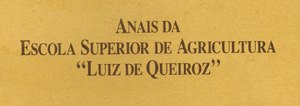This paper deals with one genus and three species of dorylaimid nematodes found inhabiting soil in Brazil, as follows: Eudorylaimus ibiti Lordello, 1965. Closely resembling E. ibiti are E. humilis (Thorne & Swanger, 1936) Andrássy, 1959, E. diadematus (Cobb, 1936) Andrássy, 1959, and E. santosi (Meyl, 1957) Andrássy, 1959. it differs from E. humilis in the following aspects: a) longer and thicker body (1,126.0-1,520.8: 1,000 microns; a=21.0-26.0 : a= 31); b) less prominent lips; and, c) tail terminus decidedly acute; differs from E. diadematus in having: a) less prominent lips; b) posterior region of body ventrally concave; and, c) a different organization in the walls of the pre-rectum; differs from E. santosi in having: a) longer body (1,126.0-1,520.8 : 900-1,000 microns); b) spear with undiscernible aperture; c) a different organization in the guiding-ring of spear; and, d) caudal papillae closer together and located in front of the middle of the tail. Mesodorylaymus pizai Lordello, 1965. M. pizai most closely resembling species is M. mesonyctius (Kreis, 1930) Andrássy, 1959, from which it differs in having: a) lip region amalgamated, continuous with neck contour (lateral view); b) males with 11-12 supplements; and, c) females with longitudinal vulva. Metaporcelaimus Lordello, 1965. This genus differs from Aporcelaimus Thorne & Swanger, 1936, in having oesophagus made up of three regions, a cardia like structure being seen between the posterior and middle parts. Type species: M.mombucae Lordello, 1965.

 Sobre um gênero e três espécies de nematóides da família Dorylaimidae
Sobre um gênero e três espécies de nematóides da família Dorylaimidae